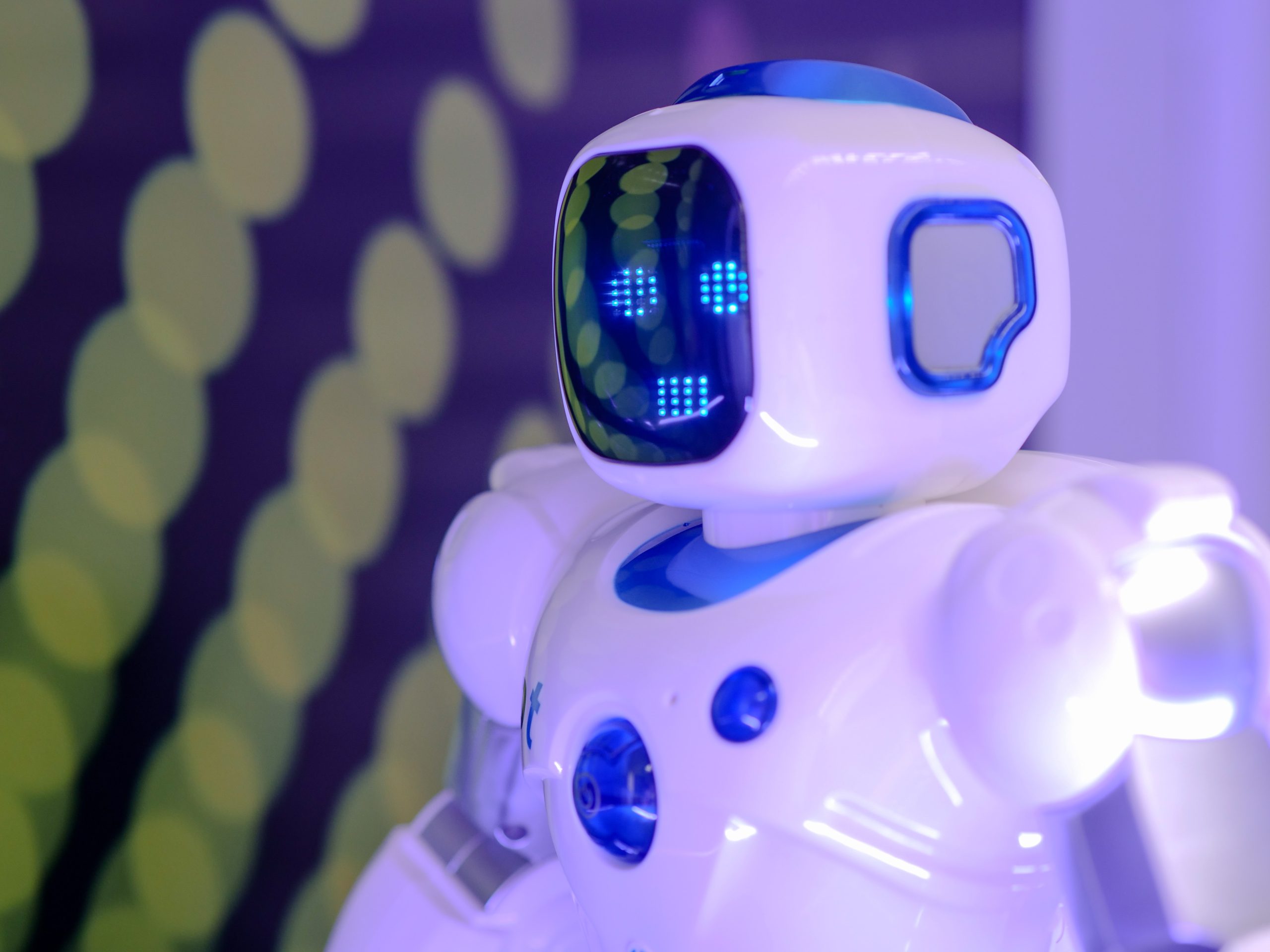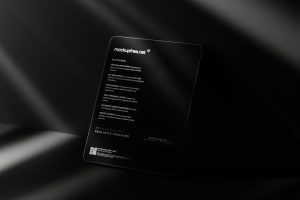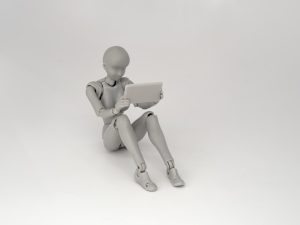
In the ever-advancing landscape of artificial intelligence, robots have successfully conquered numerous challenges once thought to be exclusive to human capabilities. However, there is one seemingly simple task that continues to confound these intelligent machines: deciphering CAPTCHA codes. These distorted combinations of letters and numbers, designed to differentiate between humans and bots, have become an integral part of our digital security systems. But why do robots struggle with this seemingly trivial test? In this article, we delve into the fascinating world of CAPTCHA and explore the reasons behind its resilience against even the most sophisticated algorithms.
The Purpose of CAPTCHA
CAPTCHA, which stands for Completely Automated Public Turing test to Tell Computers and Humans Apart, serves a great purpose in today’s digital world. While its main goal is to distinguish between humans and robots, it has evolved beyond that. CAPTCHA not only prevents automated bots from engaging in malicious activities like spamming or hacking but also plays an active role in training machine learning algorithms.
One of the fascinating aspects of CAPTCHA is how it harnesses the power of human perception and understanding to tackle challenges that are difficult for machines to solve. By presenting users with distorted text or images, CAPTCHA forces humans to decipher and interpret information that seems obvious to them but confounds machines. This process helps improve optical character recognition (OCR) technology as humans’ ability to recognize words or objects surpasses even the most advanced AI algorithms.
Moreover, CAPTCHA offers another level of security by implementing time-based delays between requests made by users on websites. When encountering suspicious traffic patterns suggesting automated bot activity, websites can prompt users with additional challenges like clicking on specific images or solving mathematical equations before allowing access. This dynamic implementation adds an extra layer of protection against malicious bots attempting brute-force attacks or scraping sensitive information from websites.
In conclusion, the purpose of CAPTCHA extends beyond just verifying human presence; it acts as a gatekeeper preventing robotic intrusions while continually refining machine learning systems’ accuracy through human input.

How CAPTCHA Works
CAPTCHA, which stands for Completely Automated Public Turing test to tell Computers and Humans Apart, is a powerful tool used to distinguish between humans and robots online. But have you ever wondered how it actually works? At its core, CAPTCHA poses a challenge that is difficult for computers to solve but relatively easy for humans. The most common form of CAPTCHA involves asking users to identify distorted characters or digits in an image. While this may seem simple enough for us humans, the process is much more complex for bots.
To make these distorted images challenging for machines, algorithms are applied to Warp and distort the characters, making it difficult for automated programs or bots to accurately recognize them. Additionally, noise is added in the background of the image to further confuse computer algorithms. This combination of techniques ensures that only human beings with pattern recognition skills can successfully complete and pass the CAPTCHA test.
However, as technology advances, so do methods used by bots to bypass CAPTCHAs. This ongoing game of cat and mouse has led researchers to develop more advanced challenges such as audio-based CAPTCHAs and even haptic puzzles where users must drag pieces into place on a touch screen device.
The battle against automated spammers will continue as developers strive to create stronger forms of CAPTCHAs that are resistant not only against current AI capabilities but also future advancements in machine learning algorithms.
The Limitations of Robots
One of the most fascinating aspects of robots is their ability to perform complex tasks with efficiency and accuracy. However, despite their advancements, there are certain limitations that prevent them from beating CAPTCHA tests. One major limitation is the lack of human-like perception and understanding. While robots can process information quickly, they often struggle to interpret images or understand context in the same way humans do.
Another limitation lies in the inability of robots to replicate a wide range of human movements and dexterity. CAPTCHA tests often require users to identify specific objects or click on particular areas of an image. These tasks may seem effortless for humans, but for a robot that relies on pre-programmed algorithms, it can be a significant challenge. The intricate motor skills required for such actions are difficult to mimic accurately.
Furthermore, robots face challenges when it comes to adapting and learning new strategies in response to changing CAPTCHA algorithms. They typically rely on pre-existing data or models to solve problems, which can limit their problem-solving capabilities in dynamic environments like CAPTCHAs.
In conclusion, while robots have made impressive strides in many areas, they still face limitations when it comes to beating CAPTCHA tests. Their lack of human-like perception and understanding combined with limited physical dexterity hinder their ability to decipher complex images and complete tasks requiring fine motor skills accurately. Additionally, their reliance on pre-programmed algorithms restricts their adaptability in dynamic situations like changing CAPTCHA algorithms.

Overcoming CAPTCHA Challenges
CAPTCHA challenges have become an integral part of our online experience, primarily designed to differentiate humans from bots. While this system has proven effective in keeping automated programs at bay, it can sometimes be a frustrating hurdle for users. Overcoming CAPTCHA challenges requires a combination of persistence and creativity.
One approach that many individuals employ is utilizing audio CAPTCHAs instead of visual ones. By listening to distorted sounds or spoken phrases, users can bypass any visual challenges they may encounter. In addition, some websites offer alternative methods such as puzzles or math questions that require human intelligence to solve rather than simply relying on traditional image recognition.
Another strategy is making use of browser extensions or software that assist with solving CAPTCHAs more efficiently. These tools rely on machine learning algorithms and crowdsourcing techniques to speed up the identification process and increase the success rate. Additionally, these extensions often come equipped with auto-fill capabilities, saving time and effort for users when filling out multiple forms.
In conclusion, while CAPTHCA challenges can prove frustrating at times, there are various strategies available to overcome them successfully. Whether it’s using alternative methods like audio CAPTCHAs or relying on technology-enhanced tools like browser extensions, users can find ways around these obstacles without resorting to the help of robots – proving once again that human ingenuity continues to prevail in our ever-evolving digital landscape.
Human Abilities That Robots Lack
While robots are becoming increasingly sophisticated, there are still several human abilities that they lack. One such ability is creativity. While AI systems can generate artwork or music based on patterns and algorithms, they lack the emotional depth and originality that comes with true creativity. Humans have the capability to think outside the box, make connections between seemingly unrelated ideas, and produce unique works of art or innovative solutions to problems.
Another human ability that robots struggle with is empathy. Despite advancements in natural language processing and emotion recognition technology, robots cannot truly understand or experience human emotions. Empathy requires a deep understanding of complex emotions, social cues, and context – something that humans excel at but robots have yet to master. This makes it difficult for them to interact with people in a way that feels authentic and truly empathetic.
In conclusion, while robots may exhibit impressive capabilities in various tasks like data analysis or repetitive actions, they still lag behind humans when it comes to creativity and empathy. These uniquely human qualities enable us to approach problems from new angles and connect on an emotional level with others. As robots continue to evolve, researchers will undoubtedly strive to bridge these gaps by developing more advanced AI systems. Nonetheless, for now at least, CAPTCHA remains one area where humans prove their superiority over machines through these distinct abilities.

Conclusion: The Future of CAPTCHA
In conclusion, the future of CAPTCHA holds both promising developments and potential challenges. With advancements in technology, it is likely that robots will continue to improve their ability to solve CAPTCHAs with greater accuracy. However, this does not necessarily mean that CAPTCHA will become obsolete.
One potential avenue for the future of CAPTCHA lies in exploring new methods beyond traditional text-based puzzles. As humans become more adept at solving these puzzles, robots are also becoming increasingly skilled at deciphering them. Therefore, researchers are now looking into alternative forms of authentication such as biometrics or behavioral analysis.
Furthermore, the rise of machine learning and artificial intelligence has opened up new possibilities for enhancing CAPTCHA security measures. Instead of relying solely on static puzzles, systems incorporating dynamic elements could be developed to constantly adapt and evolve in response to emerging robot algorithms.
While it remains uncertain how the future of CAPTCHA will unfold, it is clear that continuous innovation and adaptation will be vital in staying one step ahead of robotic advancements. Ultimately, striking a delicate balance between user experience and security will be key for successful implementation in order to ensure deterrence against malicious bots while still providing a seamless browsing experience for legitimate users.








